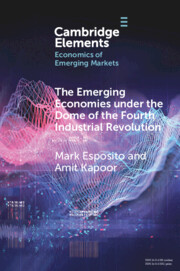Element contents
The Emerging Economies under the Dome of the Fourth Industrial Revolution
Published online by Cambridge University Press: 28 July 2022
Summary
Keywords
- Type
- Element
- Information
- Online ISBN: 9781009092142Publisher: Cambridge University PressPrint publication: 11 August 2022
Bibliography
- 7
- Cited by

